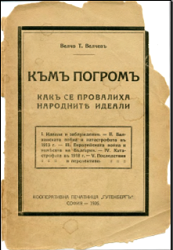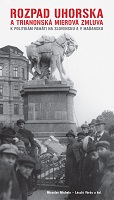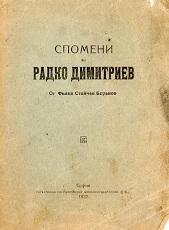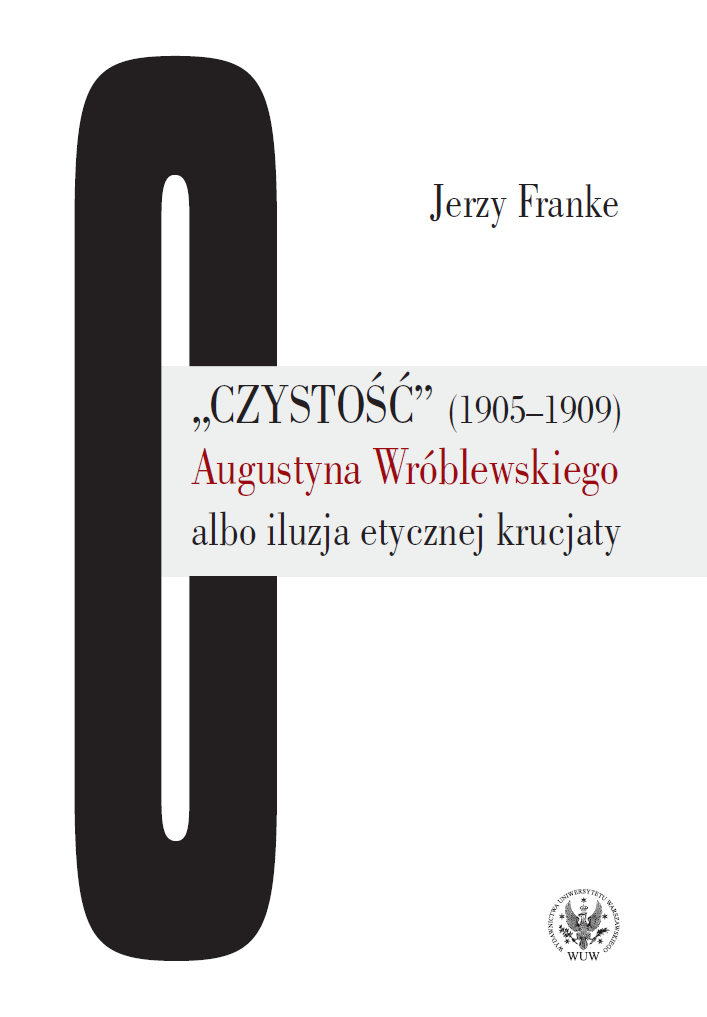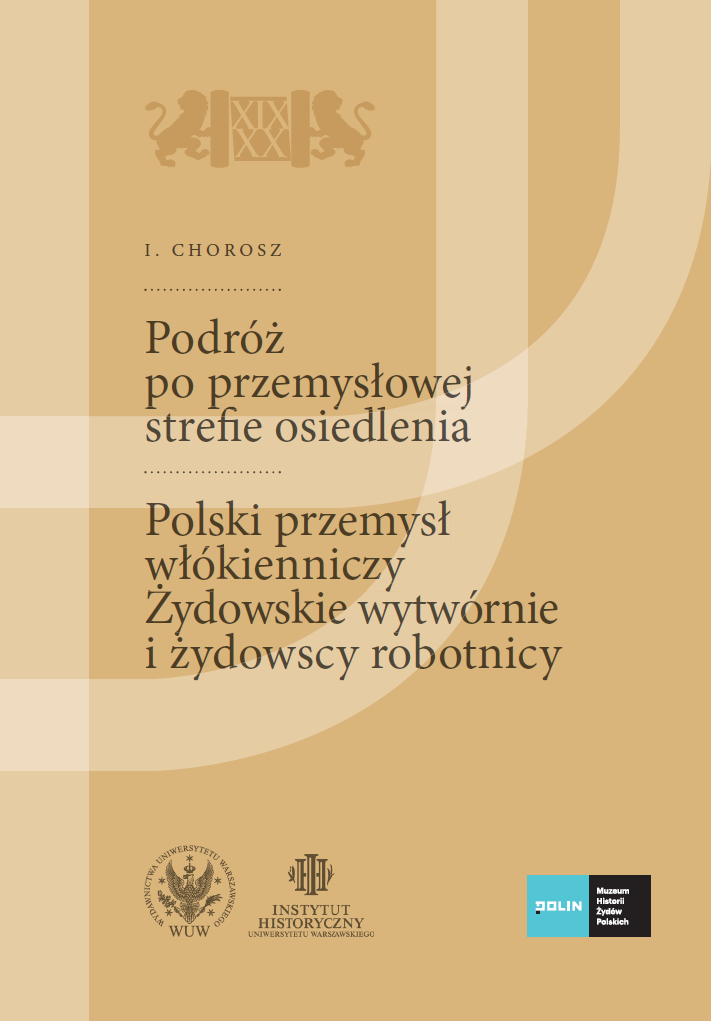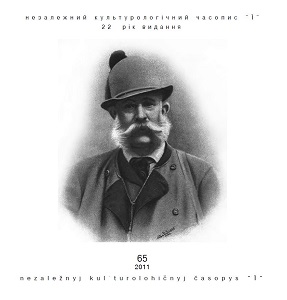Author(s): / Language(s): Slovak
As the title indicates, the team of contributors, consisting of Hungarian and Slovak authors, does not focus primarily on the historical events of 1918-1920 in Central Europe (i.e. the breaking up of the Austro-Hungarian Empire, the disintegration of the Hungarian Kingdom, the formation of Czechoslovakia, the peace conference and the making of the Trianon Peace Treaty). Political history in the traditional sense is not the focus here; rather, the authors are interested in the narratives which were told of those events in the subsequent 90 years, their existence and impact in various social contexts. Each chapter observes a different area of the institutionalised social sphere, wherein the discourse on the mentioned historical period was present in one way or another. The authors focus on four domains of social production / reproduction and instrumentation of historical knowledge: professional history writing; official history curriculum; political discourses and the utilisation of history in public discourses, as well as the symbolic/ social representation of the events around ‘Trianon’ in public spaces. Part I. of this book concentrates on professional history writing. László Vörös presents an analysis of the narratives of Hungarian and Slovak national/nationalist historians respectively between 1920 and 2010. He examines the ideological and political influences upon the established scholarly history writing, he follows the creation of historical canons and focuses also on the ‘vocabulary of trauma’, used by both national historiographies to represent the events of 1918 – 1920. There is key difference in the definition of Trianon at the conceptual level in both the public mainstream and the professional scholarly discourses in Hungary and Slovakia. In Hungary, Trianon became a sort of metaphorical key word, a denotation for much more beyond the peace treaty itself that was signed on 4th of June 1920 in the castle called Grand Trianon. The word Trianon in the Hungarian historical discourse is usually used to represent a concept that incorporates the events between October 1918 and July 1920. In other words, when Hungarian historians speak about Trianon, they speak about the previously mentioned one and half years’ long period of dissolution of the Hungarian Kingdom. In the lay public discourses moreover the concept of Trianon has a strong tragic ‘dimension’ since it incorporates into its circle of meaning also the long term consequences of the Hungarian Kingdom’s disintegration, notably the splitting away one third of the ethnic Hungarians beyond the borders of post-1918 Hungary. Slovak historians on the other hand use the word Trianon to refer ‘merely’ to the peace treaty itself. However, in the Slovak lay public discourse the term Trianon is also used as a symbolic reminder of the Hungarian nationalism, the Hungarians’ ‘unjustified’ national trauma and the ‘obsession’ of Hungarians with history. Vörös considers this elemental conceptual incompatibility as being only one of the several reasons why up to the present day there is a strong disagreement between Hungarian and Slovak historians even at the most general levels of interpretations of the events of 1918 – 1920. He concludes that the current initiatives to bridge the opposing national perspectives and promote an ‘appeasement’ between the two national historiographies are politically motivated and unrealistic, since the underlying truth regimes upon which the respective historical narratives are based are nationalistic and thus mutually exclusive. As long as history is conceived and formulated as narratives about the past of ‘nations’, as long as history serves simply as a sophisticated replacement for ‚myths of origin‘ and ‘heroic myths’, this exclusiveness will remain in place and seeking common ground will remain wishful thinking. The second author of this section – Etienne Boisserie – focuses on the Slovak scholarly discourses related to the “Martin Declaration of the Slovak nation” (1918). The meeting of 200 representatives of Slovak nationalist movement (on 30th August 1918) on which the Declaration was conceived and declared, as well as the Declaration itself are considered one of the most important milestone in Slovak national history and the key event and document in the process of the formation of Czechoslovak republic. In contrast to the commonplace view that the Declaration represents a sharp historical breaking point, Boisserie sees the meeting and the document as a moment and product of a transition, a situation, where men of varying social and cultural background – but all of them participants in the Slovak intellectual and political life – were concentrated at one point in time and space. Therefore, the history of the Declaration should be included into the wider political history of the year 1918 in which the elements presenting continuity and discontinuity are integrated. The history of the Declaration – Boisserie claims – should account for the multiplicity of the ‘concurrent rhythm’ of the history and should not be one-sidedly represented as a unique and rigid breaking point closing and starting a historical era in the same time. The political discourse is examined by Ignác Romsics who focuses on the attitudes of the Hungarian governing, political and intellectual elites towards the Trianon treaty and its consequences in the era of Horthy regime, the years after the World War II, during the initial phase of the communist regime in Hungary in the 1950s, and the post1956 Kádárist era. He shows a remarkable evolution of attitudes and conceptions of the Hungarian political elites towards the fact of dissolution of the historical Kingdom of Hungary and the detachment of one third of ethnic Hungarian population. The complete denial of the Trianon peace treaty and a demand for restoration of the Hungarian Kingdom in its former shape was the official political doctrine of Hungarian governments up to the World Warl II. The Hungarian Communists lapsed into the other extreme in the late 1940s when they thoroughly abandoned any revisionist politics and even denied the existence of large ethnic Magyar minorities in Czechoslovakia, Romania, Yugoslavia and Soviet Union. The pragmatically convenient politics of non-intervention started to change only in the late 1970s, when the Hungarian Communist became more receptive toward the growing national sentiment among the Hungarian cultural elite. Romsics stop his analyses in the early 1990s. In a sense Štefan Šutaj the author of the next chapter picks up the thread right where Romsics left it off. Šutaj defines six ways how the Hungarian political elites came to terms with the disintegration of the Kingdom of Hungary and the loss of one third of the ethnic Hungarian population to the neighbouring countries. In the second part of his chapter, he offers the results of his own quantitative research which focused on the attitudes of the Slovak majority and Hungarian minority in Slovakia. He notes that a strong emotional bond exists between the Hungarians in Slovakia and Hungary, however at the same time he concludes that the disintegration of the Hungarian Kingdom in 1918/20 was not, by far, the most traumatic event in the history of this community. Hungarians in Slovakia consider the mass deportation of the Hungarian population to the Czech borderlands and Hungary after the World War II as their greatest traumatising experience. Attila Simon analyses the political strategies of the so called ‘activist’ Hungarian minority political parties in Czechoslovakia between the two world wars. In an effort to achieve a wholesome integration of the Hungarian community into the new state, the activist politicians accepted and promoted the official Czechoslovak interpretation of the ‘true meaning’ of the Trianon treaty and its consequences. Accordingly, the disintegration of the Kingdom of Hungary was seen as a just and historically inevitable event. An undesired effect of adopting the Czechoslovak view for the activists was that they had to remain silent about the existential problems that the Hungarians encountered as an undesired minority within the Czechoslovak Republic. Despite that the Hungarian activist platforms, closely connected to the two major parties in Czechoslovakia (the Agrarian party and the Social democrats), succeeded gaining up to 20 % support from Hungarian voters in the parliamentary elections. Peter Macho’s analysis of press has brought a surprising finding that the topic of Trianon did not resonate at all vividly on the pages of the two leading Slovak autonomist papers. Macho in his study attempts to answer the question to what extent the Slovak publicists utilised the negative image of Count Albert Apponyi (former Minister of Education in the Hungarian Kingdom and the head of the Hungarian delegation during Trianon negotiations) for their propaganda purposes. Upon his promotion to head of delegation to the peace conference, his image in Slovak discourses shifted from that of a ‘magyarizator’: ‘thief’ of the Slovak language, culture and nationality to a potential ‘murderer’ of a free and sovereign Slovakia. Macho also concludes, however, that June the 4th 1920, the day when the Trianon Peace Treaty was signed, is not an important date in the Slovak collective memory and neither is Apponyi’s image connected to this date in any significant way. Up to present time he remains the symbol of the ‘magyarization’ policies of the fallen Hungarian Monarchy. The chapter of Roman Holec is dedicated to a reflection of the topic of a dissolving Hungarian Kingdom in Slovak prose and pulp-fiction. Within this frame, the author also attempts to rehabilitate fiction as a source of historical evidence. Holec proves a similar point to Macho’s conclusions that Trianon treaty and dissolution of Hungarian Kingdom are rather rare among fiction themes, and if they appear, it was very often in connection with the irredentism and enmity of the Hungarians and the centuries’ long ‘oppression’ of Slovaks and ‘magyarisation’. The third part of the book is dedicated to history teaching and curricula. The authors examine mainly the problems concerning the traditional ethnocentric and nationalist approaches to teaching national histories in Slovak and Hungarian schools. In the opening text György Jakab critically reviews the direction taken by the teaching of history in Hungary in a wider historical and conceptual context. He notes the incompatibility of the three basic didactic models: the traditional model, the one focused on practical needs and the one focused on development in general. Jakab’s paper presents primarily an impulse and appeal for further discussion about the character and purpose of history education in civil societies of the 21st century. Viliam Kratochvíl continues in concordance with Jakab when he claims that the purpose of history teaching should be helping the pupils learn to think critically and independently; and not merely mechanically memorise a minimum compulsory amount of stories about the national past, national heroes and so on. He proposes a didactical approach emphasising the need for multiplicity of perspectives in History textbooks, which he considers a vital part of historical literature and not mere a genre lying beyond the borders of history as a scholarly discipline. This section of the book closes with the chapter by Barnabás Vajda who examined the history text-books used in Hungarian minority schools in Slovakia since the 1920s up to present day. The textbooks from the era of the interwar Czechoslovak Republic rather neglected the issue of the dissolution of Hungarian Kingdom and the Trianon treaty. The emphasis was laid on the success story of the creation of the Republic. The theme of the dissolution of the ‘old Hungary’ was incorporated into the curricula in a way which helped spread the idea of a bright future for Hungarians in democratic Czechoslovakia in contrast to their alleged oppression and suffering under the yoke of Hungarian nobility in the past. After the World War II, ideological censorship and adjustment of history books pushed the topic of Trianon into the sphere of complete taboo. Two dominant stories took its place: the rescue of the Czech and Slovak nations from under Habsburg oppression; and the immense importance of the Bolshevik Great October Socialist Revolution in 1917 and its benefi cial consequences for Czechoslovakia. Due to the political changes in 1989, Vajda notes slow but positive progress, which is, however, relative. Although Trianon is no longer tabooed, there is much to be contributed to the way this topic is covered in history text-books. The lasting problem is primarily, according to Vajda, the unchanging Slovak ethno-centric optic of the authors. In the fourth part of the book, the authors have focused primarily on the political instrumentation of narratives about events of 1918 – 1920 and their consequences. Miklós Zeidler analysed the manifestations of the irredentist movement in Hungary between the two world wars. He follows the appropriation of the public space through erecting statues, demonstrations and public meetings and naming of streets and squares. Zeidler offers an iconographic analyses of irredentism related public artefacts, he studies the linguistic and symbolic peculiarities of representations of the ‘greatest national tragedy’ of Hungarians and the specific topoi dominantly present in the public discourses. He concludes irredentism partially served as a ‘therapy’ for a traumatised society, since it helped to process the shock just like a ‘painkiller’ does. Complete therapy could not be achieved, however, since the diagnosis was flawed and irredentism itself gradually became a source of frustration, because the ‘healing’ (the revision of the old borders) simply would not come. The chapter of Balázs Ablonczy deals with a related phenomenon, as he follows how Hungarian refugee associations from different detached territories of the former Kingdom were dedicated to keeping the Hungarian past alive. Ablonczy studies the activities of five associations coming from Spiš region, Banská Štiavnica (central and northern Slovakia), Rijeka and Transylvania and particularly their remembering, the specific ways in which they constructed their memories about Hungary infl uenced by their sentiments towards the region from which they originated. At the same time, we are informed about the close bonds existing between these associations and the political organisations and government in Hungary. These refugee associations are, in the view of the author fi ne examples of the inability to come into terms with Trianon and its consequences. József Demmel and Miroslav Michela analysed the unveiling of the memorial of János Tuba (1855-1921) and his re-burial in Komárno in 1925. They studied the symbolic linkage of local and national interests, which is represented by the text on the memorial of this important local politician – For his home town he lived, for his nation he worked. The emphasis on regionalism in this case was meant to symbolize the relationship with the purely Hungarian environment of the town of Komárno (Komárom) that found itself just outside of the borders of its ‘mother state’. The surviving of the Hungarian national community was understood as the highest moral imperative in the given environment. The memorial and the ceremony functioned also as expression of discontent with the position and situation in which the Hungarian community found itself in Czechoslovakia. The life of Hungarians in the Republic, i.e. life in a position of undesired minority was strongly contrasted against their previous situation of majority in the Hungarian Kingdom. Tuba’s memorial did not, in the end become an important place of memory, as one might have anticipated. The population of Komárno celebrated mainly the more established cult of the Revolution 1848/1849. The last block of the book concentrates on the cultural trauma that is caused by politics of memory on both sides. Éva Kovács examines the recent Trianon discourses (the ‘Trianon talk’) that take place in Hungary. She notes that current governmental elites deliberately represent Trianon as an actual and living all-societal trauma, a compulsory national tragedy for all Hungarians home and abroad. She poses the question why several academics, respected historians, philosophers and social scientific scholars seem so keen to reproduce this naïve nationalistic thesis of a historical trauma that allegedly torments the Hungarian nation for the last 90 years. One of the explanations might be the strongly essentialist and reifying concept of a nation which is notoriously difficult to deconstruct, not only in Hungary, but also in Slovakia and other central European post-socialist countries. Kovács notes that many historians in Hungary holds that speaking freely about Trianon as a national trauma, will help the allegedly much needed process of ‘healing’. Paradoxically, their efforts result in just the opposite effect: not only does the supposed trauma stay unhealed, but by constant reminders thereof, they help to produce a wide social neurosis, caused by growing faith in the existence of the Trianon trauma. The vicious circle should be cut, Kovács claims and the constant reproduction of the trauma discourse and the artificial social neurosis must be stopped. This should occur through the deconstruction of the essentialist/reifying concept of a nation and also through the re-definition of the role history should play in societal life. Kovács’s conclusions have a general validity and they seem to be plausible for the wider European context as well; her conclusions regarding the Hungarian discourse of ‘Trianon trauma’ certainly can be equally applied to Slovak discourses of ‘Magyarization trauma’. The problem is shown in a similar light by Dagmar Kusá and Miroslav Michela, who observe the historical and generational aspect of construing cultural memory about Trianon, as a historic trauma in Hungary and Slovakia alike. The ambition of this text, however, is mainly to offer some theoretical starting points. They emphasise the leading role of governmental and cultural institutions and social actors in maintain the various discourses of historical traumas. They specifically address the responsibility of historians and political elites in creating ethnic tensions. Trianon, in their conception represents a functional metaphor, a complex theme with several well established but mutually exclusive and contradicting interpretations, which have become a ‘raw material’ in the continuing process of construing national identities in both countries.
More...




